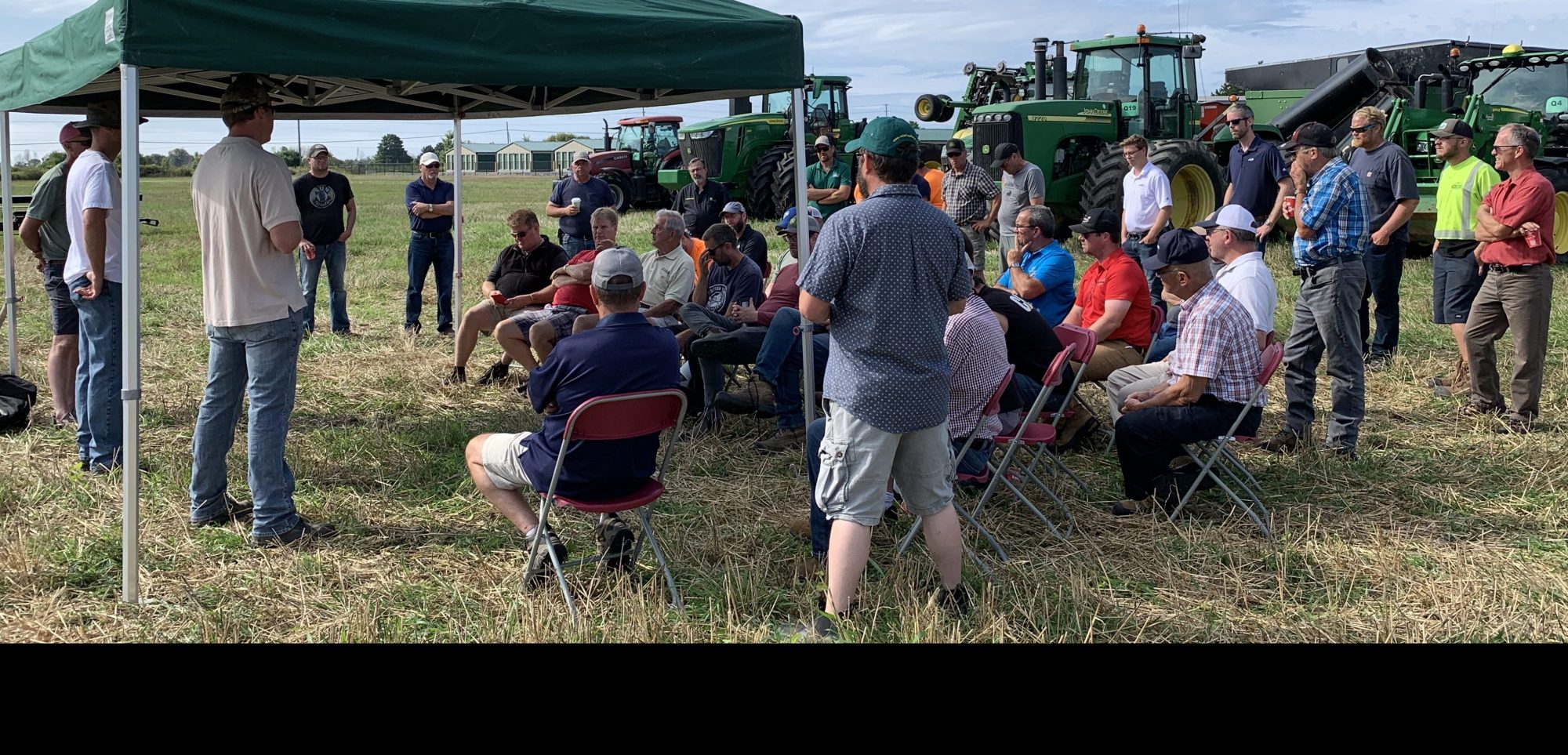Soil & Crop members in Quinte Region have shared a keen interest in the St. Clair Cover Crop Trial (check out the project details here).
Many thanks to Christine O’Reilly for forwarding this project summary from Adam Hayes, which highlights some of the most significant trial results in 2017:
Cover crop mixes planted after winter wheat harvest can produce variable amounts of biomass depending on seeding rate, moisture, soil fertility, planting date and time of harvest. Fall harvest biomass ranged from 790-13875 lbs/ac. It is difficult to determine optimal mixes. Two years of study indicate small differences between mix composition and number of species, however if the cover crop is not terminated early, there are no significant differences. Nitrogen credits were not calculated due to the lack of difference in corn yield between the no cover and cover crop plots as well as the different N rates.
A key learning from the project was that when it comes to seeding rates “less is more”! It will depend on the situation, growing conditions and planting date. Keep in mind the goal of the cover crop and the species being planted. The late summer/fall moisture and growing conditions had a big influence on the amount of growth in the cover crop plots. Seeding rates and growth determined the amount of cover crop residue/green matter in the spring as well. The intensive counting of cover crop populations showed that the proportions of each species seeded isn’t necessarily what shows up in the field. Growers should step back and look at a square metre of cover crop and ask what do I want to see for cover, competition with weeds etc. This can help guide seeding rates and proportion of species in a mixture.
The mixture part of the project also provided an understanding of the niche some cover crops fill as well as how competitive they are. The following are a few examples:
- Flax shines under dry conditions and is inexpensive to add to a mix
- Faba beans are a good fall legume
- Sunn hemp does not have a place in mixtures
- Phacelia will fill in gaps in cover, provides pollinator habitat and has fine roots
- Sunflowers provide pollinator habitat and weed suppression
- Mustard/ radish provide weed suppression
The range of soil types and plot locations gave a better understanding of cover crop dynamics/responses e.g. mid/late August planted cover crops such as sorghum, sunn hemp and buckwheat will not amount to much due to frost so adjust the mix to suit realistic planting dates.
Within the context of a southern Ontario climate, there is potential for certain cover crop species to act as a source of phosphorus when exposed to freeze-thaw cycling. However, frost-tolerant species have not been shown to release phosphorus in these conditions, and species such as cereal rye and hairy vetch should be considered as optimal cover crop choices when managing phosphorus loss is a concern. Planting mixtures may alter the pattern of phosphorus leaching from some crops, but can still result in high phosphorus loss. Compared to the surface soil pool, cover crops contained a much smaller pool of water extractable phosphorus, and the potential phosphorus leaching from cover crops did not show a relationship with soil or shallow groundwater phosphorus concentrations.
The trials in 2017 could not show any differences in the various cover crop mixtures and their influence on insect populations, mainly due to the weeds and volunteer crop that was present throughout the trials for most of the assessment period. Slugs were present at the Thamesville location because of the greater canopy establishment. Slugs do well in locations with more ground cover, so caution is warranted when planting crops prior to a good burndown of the cover crop, especially in fields with a known history of slugs. That said no major pest issues were detected at levels of concern at either of these locations, suggesting that site selection plays a bigger role in insect influence than cover crop mixtures. Sites with very little known pest history may not experience pest issues when planting a cover crop. Future cover crop research at locations with a known history of a certain pest may help sort out any cover crop mixture influence and burndown timings influences.
